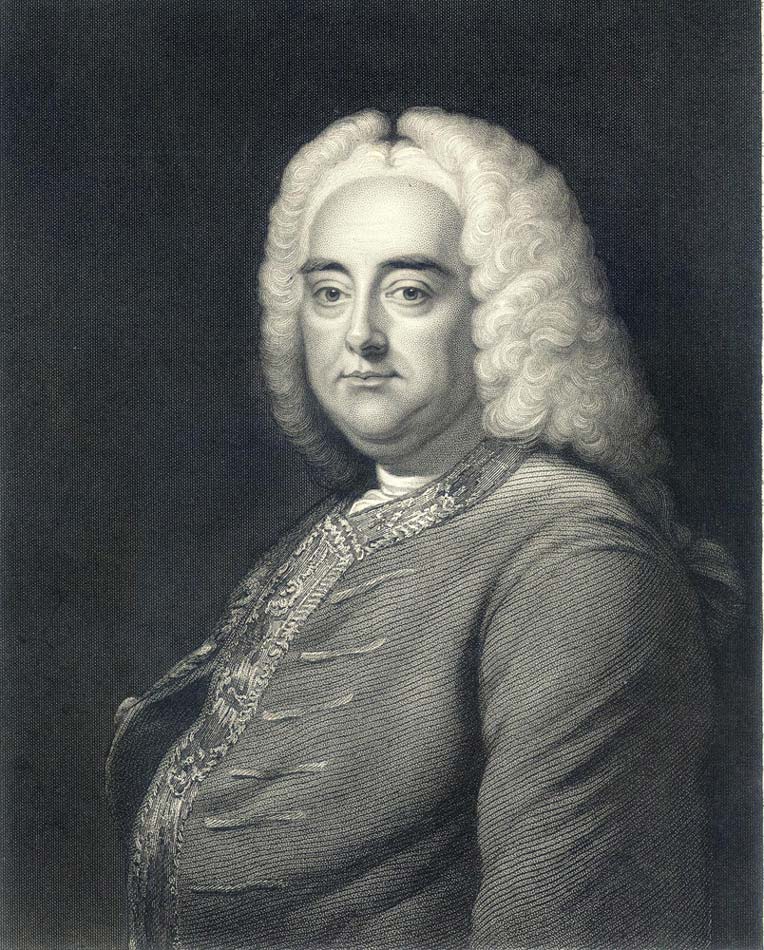John Gay
John Gay, the celebrated poet and dramatist, was buried in the south transept of Westminster Abbey on 23rd December 1732, in the central part of the area near Thomas Parr's grave. The funeral was a lavish affair and Alexander Pope was one of the pall bearers.
Monument
A monument was erected for him against the south wall and the monument to Samuel Butler was moved to accommodate it. But in the 1930s this, and the adjoining monument to Nicholas Rowe, was moved to the Abbey's triforium as two important wall paintings were discovered behind them during cleaning. The monuments can be viewed in the new Queen's Diamond Jubilee Galleries in the triforium.
The marble monument consists of a high relief portrait of the poet on a roundel against a pyramid with masks, a trumpet and pan-pipes above. At the top is a cartouche showing his coat of arms: "or, on a fess sable between three escallops azure, five lozenges argent". The sculptor was John Michael Rysbrack. Just below the portrait bust is an inscription composed by the poet himself:
Life is a jest; and all things show it, I thought so once; but now I know it.
Below is an inscription written by Alexander Pope:
Of manners gentle, of affections mild; in wit a man; simplicity, a child; with native humour temp'ring virtuous rage, form'd to delight at once and lash the Age: above temptation, in a low estate, and uncorrupted, e'en among the Great; a safe companion, and an easy friend, unblam'd thro' life, lamented in thy end. These are thy honours! not that here thy bust is mix'd with heroes, or with kings thy dust; but that the worthy and the good shall say, striking their pensive bosoms – Here lies GAY. A:Pope.
In two columns below:
Here lye the ashes of Mr JOHN GAY, the warmest friend, the gentlest companion, the most benevolent man; who maintained independency in low circumstances of fortune; integrity, in the midst of a corrupt Age; and that equal serenity of mind, which conscious goodness alone can give, thro' the whole course of his life. Favourite of the Muses, he was led by them to every elegant art, refined in taste, and fraught with graces all his own. In various kinds of poetry, superior to many, inferior to none, his works continue to inspire, what his example taught, contempt of folly, however adorned; detestation of vice, however dignified; reverence for virtue, however disgraced
And on the base:
CHARLES and CATHERINE, Duke and Dutchess of Queensberry, who loved this excellent person living, and regret him dead, have caused this monument to be erected to his memory.
Life
John was born in Barnstaple in Devon on 30th June 1685, one of five children of William and Katherine (Hanmer). He did not attend university but started his career as a silk mercer in London. He had already published several works when he became secretary to the Duchess of Monmouth and he went on to be secretary to the Earl of Clarendon in Hanover. His most famous work, The Beggar's Opera, opened in London in 1728 to great success, and is still performed to this day. During his last illness he was resident at the Duke of Queensberry's house and died unmarried on 4th December 1732. His sisters Catherine (Baller) and Joan (Fortescue) administered to his estate.
Further Reading
"John Gay. A profession of friendship. A critical biography" by David Nokes, 1995

This image can be purchased from Westminster Abbey Library
Image © 2024 Dean and Chapter of Westminster










